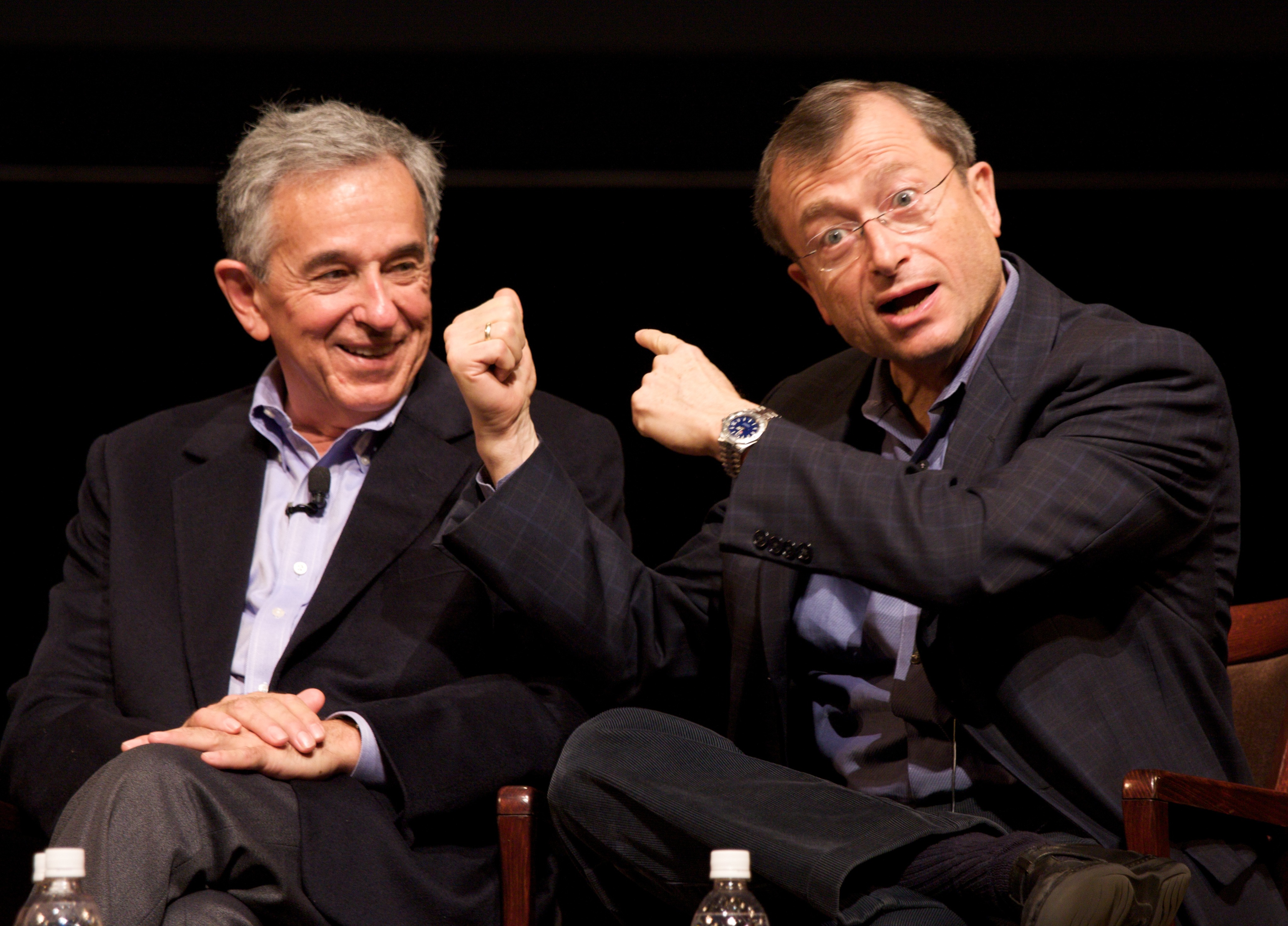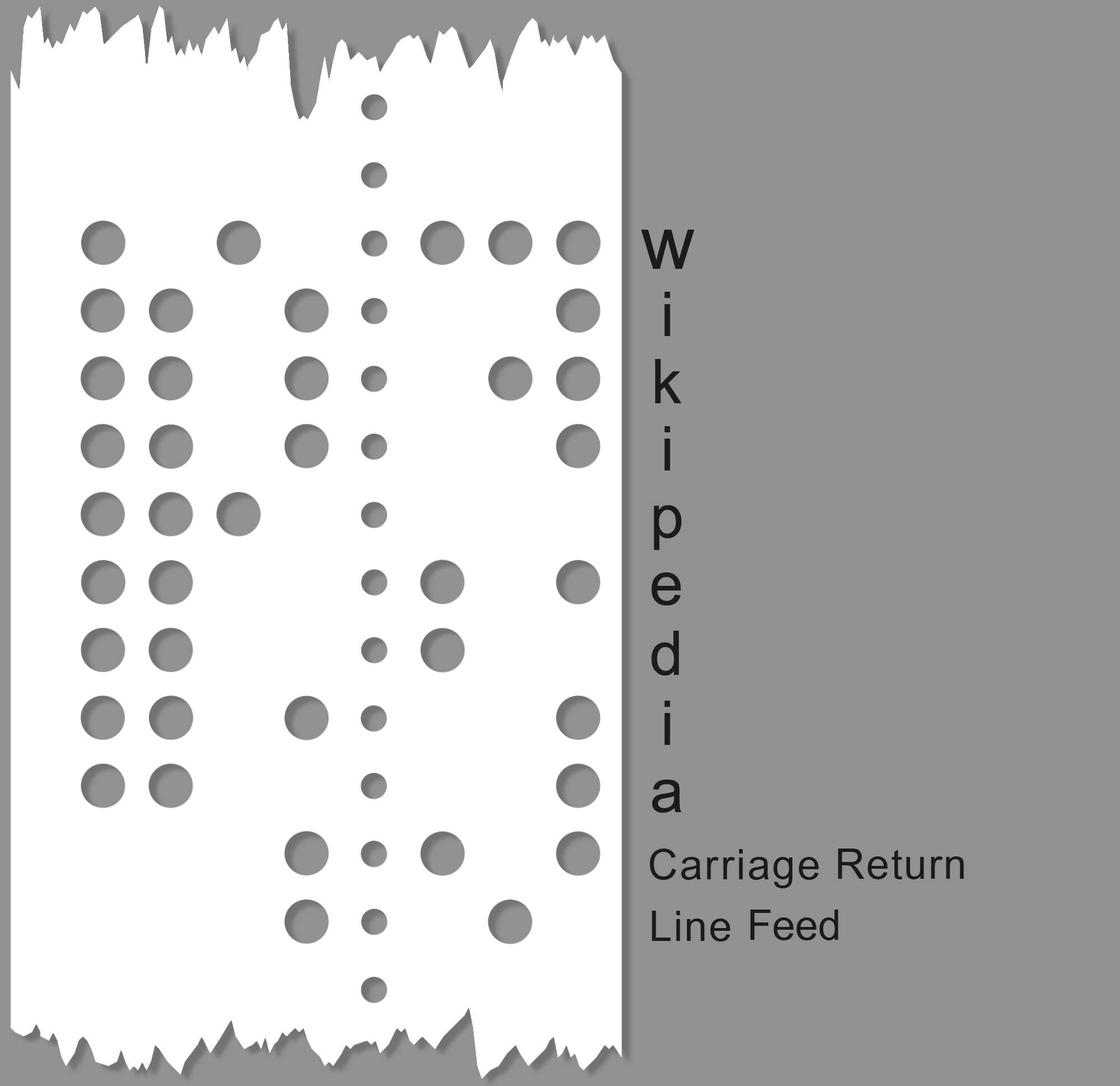|
ASCII Art
ASCII art is a graphic design technique that uses computers for presentation and consists of pictures pieced together from the 95 printable (from a total of 128) character (computing), characters defined by the ASCII Standard from 1963 and ASCII compliant character sets with proprietary extended characters (beyond the 128 characters of standard 7-bit ASCII). The term is also loosely used to refer to #Other text-based visual art, text-based visual art in general. ASCII art can be created with any text editor, and is often used with free-form languages. Most examples of ASCII art require a Monospaced font, fixed-width font (non-proportional typeface, fonts, as on a traditional typewriter) such as Courier (typeface), Courier or Consolas for presentation. Among the oldest known examples of ASCII art are the creations by computer-art pioneer Kenneth Knowlton from around 1966, who was working for Bell Labs at the time. "Studies in Perception I" by Knowlton and Leon Harmon from 1966 ... [...More Info...] [...Related Items...] OR: [Wikipedia] [Google] [Baidu] |
Webcomic
Webcomics (also known as online comics or Internet comics) are comics published on the internet, such as on a website or a mobile app. While many webcomics are published exclusively online, others are also published in magazines, newspapers, or comic books. Webcomics can be compared to self-published print comics in that anyone with an Internet connection can publish their own webcomic. Readership levels vary widely; many are read only by the creator's immediate friends and family, while some of the most widely read have audiences of well over one million readers. Webcomics range from traditional comic strips and graphic novels to avant garde comics, and cover many genres, style (visual arts), styles, and subjects. They sometimes take on the role of a comic blog. The term web cartoonist is sometimes used to refer to someone who creates webcomics. Medium There are several differences between webcomics and print comics. With webcomics the restrictions of traditional books, newspa ... [...More Info...] [...Related Items...] OR: [Wikipedia] [Google] [Baidu] |
Bulletin Board System
A bulletin board system (BBS), also called a computer bulletin board service (CBBS), is a computer server running list of BBS software, software that allows users to connect to the system using a terminal program. Once logged in, the user performs functions such as uploading and downloading software and data, reading news and bulletins, and exchanging messages with other users through public Internet forum, message boards and sometimes via direct synchronous conferencing, chatting. In the early 1980s, message networks such as FidoNet were developed to provide services such as M+NetMail, NetMail, which is similar to internet-based email. Many BBSes also offered BBS door, online games in which users could compete with each other. BBSes with multiple phone lines often provided chat rooms, allowing users to interact with each other. Bulletin board systems were in many ways a precursor to the modern form of the World Wide Web, social networking service, social networks, and other aspe ... [...More Info...] [...Related Items...] OR: [Wikipedia] [Google] [Baidu] |
ASCII Full
ASCII ( ), an acronym for American Standard Code for Information Interchange, is a character encoding standard for representing a particular set of 95 (English language focused) printable and 33 control characters a total of 128 code points. The set of available punctuation had significant impact on the syntax of computer languages and text markup. ASCII hugely influenced the design of character sets used by modern computers; for example, the first 128 code points of Unicode are the same as ASCII. ASCII encodes each code-point as a value from 0 to 127 storable as a seven-bit integer. Ninety-five code-points are printable, including digits ''0'' to ''9'', lowercase letters ''a'' to ''z'', uppercase letters ''A'' to ''Z'', and commonly used punctuation symbols. For example, the letter is represented as 105 (decimal). Also, ASCII specifies 33 non-printing control codes which originated with ; most of which are now obsolete. The control characters that are still commonly used i ... [...More Info...] [...Related Items...] OR: [Wikipedia] [Google] [Baidu] |
EBCDIC
Extended Binary Coded Decimal Interchange Code (EBCDIC; ) is an eight- bit character encoding used mainly on IBM mainframe and IBM midrange computer operating systems. It descended from the code used with punched cards and the corresponding six-bit binary-coded decimal code used with most of IBM's computer peripherals of the late 1950s and early 1960s. It is supported by various non-IBM platforms, such as Fujitsu-Siemens' BS2000/OSD, OS-IV, MSP, and MSP-EX, the SDS Sigma series, Unisys VS/9, Unisys MCP and ICL VME. History EBCDIC was devised in 1963 and 1964 by IBM and was announced with the release of the IBM System/360 line of mainframe computers. It is an eight-bit character encoding, developed separately from the seven-bit ASCII encoding scheme. It was created to extend the existing Binary-Coded Decimal (BCD) Interchange Code, or BCDIC, which itself was devised as an efficient means of encoding the two ''zone'' and ''number'' punches on punched cards into six ... [...More Info...] [...Related Items...] OR: [Wikipedia] [Google] [Baidu] |
Line Printer
A line printer Printer (computing), prints one entire line of text before advancing to another line. Most early line printers were printer (computing)#Impact printers, impact printers. Line printers are mostly associated with unit record equipment and the early days of digital computing, but the technology is still in use. Print speeds of 600 lines per minute (approximately 10 pages per minute) were achieved in the 1950s, later increasing to as much as 1200 lpm. Line printers print a complete line at a time and have speeds in the range of 150 to 2500 lines per minute. Some types of impact line printers are #Drum printer, drum printers, #Band printer, band-printers, and #Chain printer, chain printers. Non-impact technologies have also been used, e.g., thermal printing, thermal line printers were popular in the 1970s and 1980s, some inkjet and laser printers produce output a line or a page at a time. Designs Many impact printers, such as the daisywheel printer and dot matri ... [...More Info...] [...Related Items...] OR: [Wikipedia] [Google] [Baidu] |
IBM 1403
The IBM 1403 line printer was introduced as part of the IBM 1401 computer in 1959 and had an especially long life in the IBM product line. Description The original model can print 600 lines of text per minute and can skip blank lines at up to 75 inches per second (190 cm/s), while the model 3 can print at up to 1400 lines per minute. The standard model has 120 print positions. An additional 12 positions are available as an option. A print chain with up to 15 copies of the character set spins horizontally in front of the ribbon and paper. Hammers strike the paper from behind at exactly the right moment to print a character as it goes by. In later models, the print chain is replaced by a print train; print slugs instead of being mounted on a chain are placed in a track. The 1403 chain or train contains 240 characters, however numerous duplications allow a line to be printed in less than the 0.4 s required for one full rotation. The original standard "A" chain con ... [...More Info...] [...Related Items...] OR: [Wikipedia] [Google] [Baidu] |
Andries Van Dam
Andries "Andy" van Dam (born December 8, 1938) is a Dutch-American professor of computer science and former vice-president for research at Brown University in Providence, Rhode Island. Together with Ted Nelson he contributed to the first hypertext system, Hypertext Editing System (HES) in the late 1960s. He co-authored '' Computer Graphics: Principles and Practice'' along with J.D. Foley, S.K. Feiner, and John Hughes. He also co-founded the precursor of the ACM SIGGRAPH conference. Van Dam serves on several technical boards and committees. He teaches an introductory course in computer science and courses in computer graphics at Brown University. Van Dam received his B.S. degree with Honors in Engineering Sciences from Swarthmore College in 1960 and his M.S. and Ph.D. from the University of Pennsylvania in 1963 and 1966, respectively. Students Van Dam has mentored undergraduates, other scholars, and practitioners in hypertext and computer graphics. One of his students was ... [...More Info...] [...Related Items...] OR: [Wikipedia] [Google] [Baidu] |
Blue Ridge Summit, Pennsylvania
Blue Ridge Summit is an unincorporated community and census-designated place in Franklin County, Pennsylvania, United States, southwest of Gettysburg in the central part of the state, adjoining Pennsylvania's southern border with Maryland. It is less than east of Pen Mar, Maryland. The population of Blue Ridge Summit was 887 at the 2020 census. The community was the birthplace of Wallis Simpson, the wife of Prince Edward, Duke of Windsor (previously King Edward VIII of the United Kingdom).Weir, p. 328 It is also home to the Monterey Country Club which has served as a summer retreat for many Washingtonians, and American presidents Woodrow Wilson, Calvin Coolidge and Dwight D. Eisenhower all played the Monterey Country Club course. Geography Blue Ridge Summit is located in the southeastern corner of Franklin County at the height of land on South Mountain, the northern extension of the Blue Ridge Mountains of Virginia. It is bordered to the east by Adams County, and to the ... [...More Info...] [...Related Items...] OR: [Wikipedia] [Google] [Baidu] |
Baudot Code
The Baudot code () is an early character encoding for telegraphy invented by Émile Baudot in the 1870s. It was the predecessor to the International Telegraph Alphabet No. 2 (ITA2), the most common teleprinter code in use before ASCII. Each character in the alphabet is represented by a series of five bits, sent over a communication channel such as a telegraph wire or a radio signal by asynchronous serial communication. The symbol rate measurement is known as baud, and is derived from the same name. History Baudot code (ITA1) In the below table, Columns I, II, III, IV, and V show the code; the Let. and Fig. columns show the letters and numbers for the Continental and UK versions; and the sort keys present the table in the order: alphabetical, Gray and UK Baudot developed his first multiplexed telegraph in 1872 [...More Info...] [...Related Items...] OR: [Wikipedia] [Google] [Baidu] |
Character Set
Character encoding is the process of assigning numbers to graphical characters, especially the written characters of human language, allowing them to be stored, transmitted, and transformed using computers. The numerical values that make up a character encoding are known as code points and collectively comprise a code space or a code page. Early character encodings that originated with optical or electrical telegraphy and in early computers could only represent a subset of the characters used in written languages, sometimes restricted to upper case letters, numerals and some punctuation only. Over time, character encodings capable of representing more characters were created, such as ASCII, the ISO/IEC 8859 encodings, various computer vendor encodings, and Unicode encodings such as UTF-8 and UTF-16. The most popular character encoding on the World Wide Web is UTF-8, which is used in 98.2% of surveyed web sites, as of May 2024. In application programs and operating syste ... [...More Info...] [...Related Items...] OR: [Wikipedia] [Google] [Baidu] |





